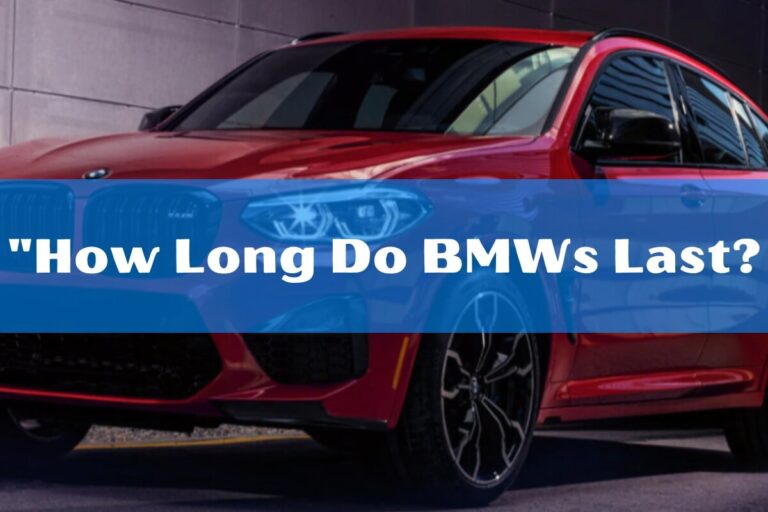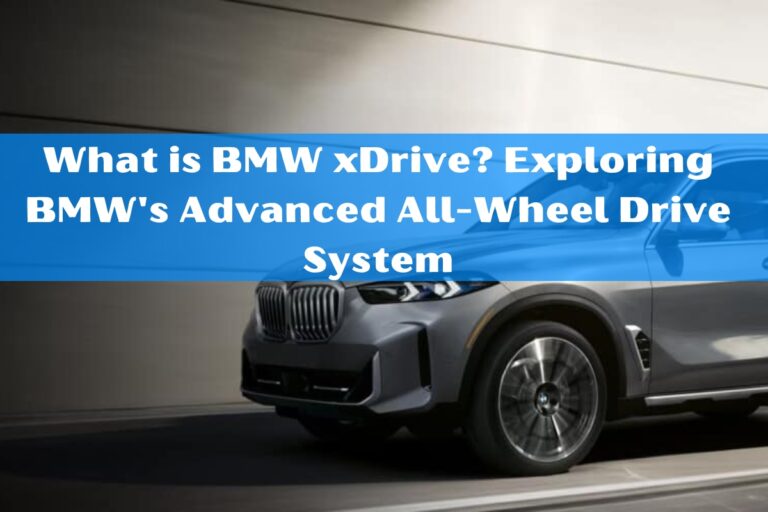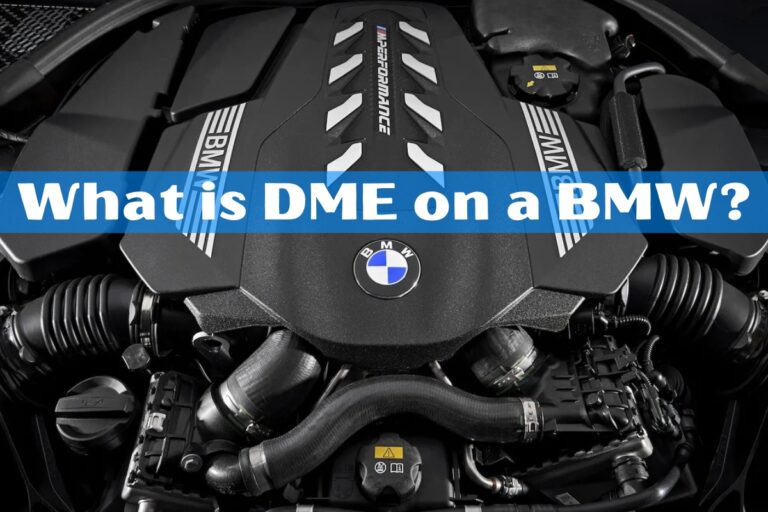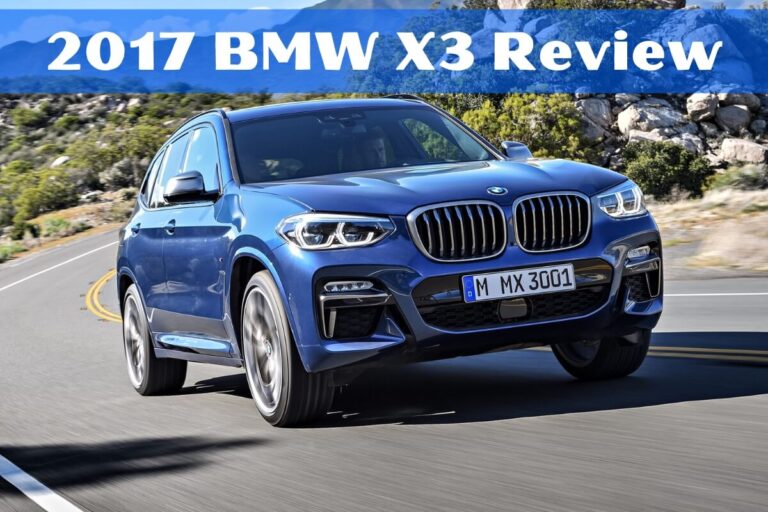Porsche Cayenne vs BMW X5: The Luxury SUV Showdown
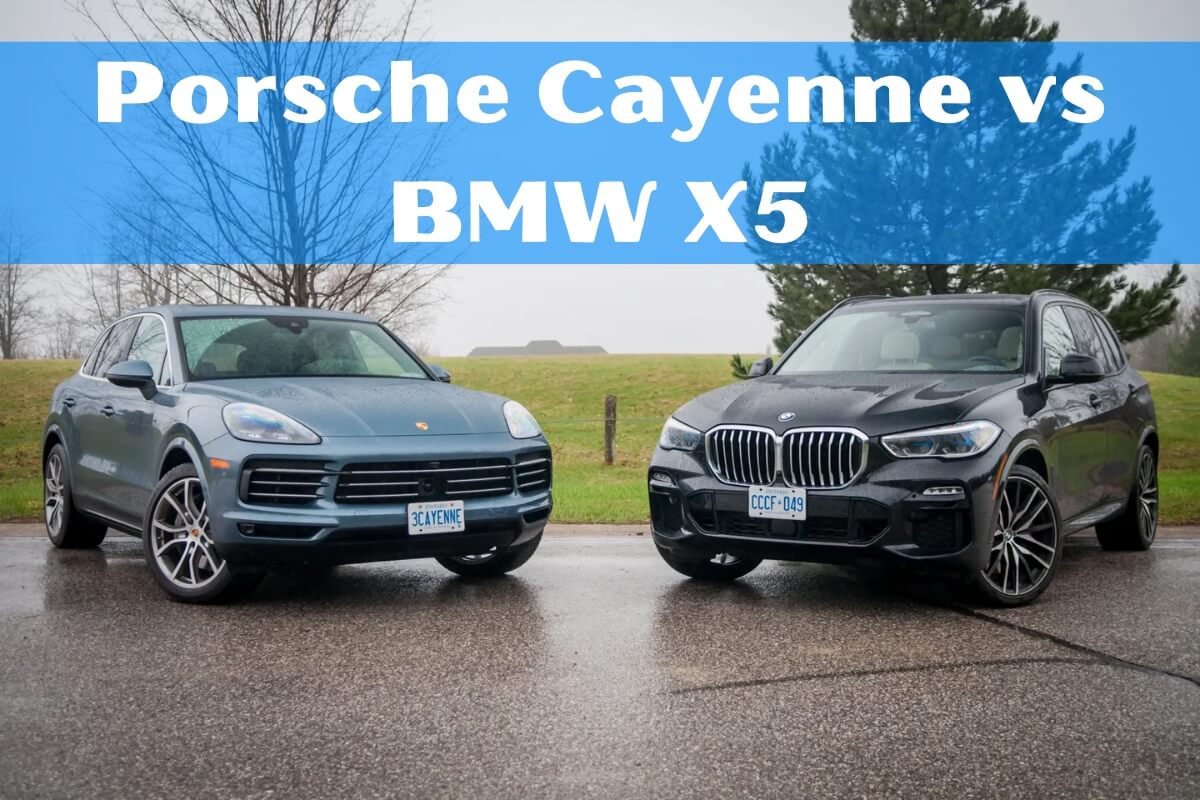
When it comes to premium luxury SUVs, few models can match the prestige and performance of the Porsche Cayenne and BMW X5. These two German giants have been battling it out for years, each offering a unique blend of power, style, and cutting-edge technology. But which one truly reigns supreme? In this in-depth comparison, we’ll dive into the nitty-gritty details to help you decide between the Cayenne vs X5.
The key differences between the Porsche Cayenne and BMW X5 boil down to design philosophy, performance characteristics, interior space and practicality, advanced safety tech, multimedia systems, and pricing. We’ll cover all these areas in detail.
Design and Styling: Sporty vs Rugged
When it comes to exterior styling, the Porsche Cayenne and BMW X5 take distinctly different approaches. The Cayenne embodies Porsche’s sports car DNA, with a sleek, coupe-like profile and aggressive styling cues. Its sloping roofline, muscular haunches, and wide stance give it a decidedly athletic appearance on the road.
In contrast, the X5 exudes a more traditional SUV design language. Its upright proportions, boxy silhouette, and elongated hood convey a sense of ruggedness and capability. While still undeniably stylish, the X5’s design places greater emphasis on practicality and versatility.
Moving inside, both cabins are awash in premium materials and impeccable craftsmanship. However, the Cayenne’s interior feels more driver-focused and sporty, with a low-slung seating position and a cockpit-like layout. The X5’s cabin, on the other hand, prioritizes spaciousness and comfort, with a more upright driving position and a more traditional center console design.
Performance and Driving Dynamics: Power and Poise
Under the hood, both the Cayenne and X5 offer a range of potent powertrains to suit various performance preferences. The Cayenne’s engine lineup includes a punchy turbocharged V6, a brawny twin-turbo V8, and even a plug-in hybrid variant. The X5, meanwhile, offers a similar array of turbocharged inline-six and V8 engines, as well as a couple of hybrid options.
In terms of outright acceleration, the top-tier Cayenne Turbo GT holds a slight edge over the X5 M Competition, reaching 60 mph in a blistering 3.1 seconds versus 3.7 seconds for the BMW. However, the X5 M’s twin-turbo V8 produces a more prodigious 617 horsepower, eclipsing the Cayenne Turbo GT’s 631 horsepower rating.
Where the Cayenne truly shines is in its handling and driving dynamics. Thanks to its lower center of gravity and expertly tuned suspension, the Cayenne feels more planted and agile in corners, exhibiting minimal body roll and excellent steering feedback. The X5, while still a capable handler, leans more towards comfort and refinement, with a more isolated and insulated driving experience.
Both SUVs offer a range of advanced chassis technologies, such as adaptive air suspension, active anti-roll bars, and rear-wheel steering, which further enhance their respective driving characteristics.
Practicality and Interior Space: Room for Everything
While performance and style are undoubtedly important, many luxury SUV buyers also place a premium on practicality and interior space. In this regard, the BMW X5 holds a slight advantage over the Porsche Cayenne.
With its more upright and boxy silhouette, the X5 offers more generous interior volume and cargo capacity than its Porsche rival. Behind the second row, the X5 boasts a cavernous 33.9 cubic feet of cargo space, compared to the Cayenne’s still-respectable 27.2 cubic feet. Fold the rear seats down, and the X5’s maximum cargo capacity swells to an impressive 72.3 cubic feet, dwarfing the Cayenne’s 60.3 cubic feet.
The X5 also offers an optional third row of seating, making it a viable option for larger families. While the third row is best suited for children, it does provide added versatility that the Cayenne simply cannot match.
Both SUVs, however, offer a wealth of clever storage solutions and family-friendly amenities, such as user-friendly infotainment systems, multiple USB ports, and advanced climate control systems.
Safety and Driver Assistance Tech: Keeping You Protected
In today’s competitive automotive landscape, safety is paramount – and the Porsche Cayenne and BMW X5 are both exemplars in this regard. Both models come standard with a comprehensive suite of advanced driver assistance systems, including automatic emergency braking, lane departure warning, and blind-spot monitoring.
However, the X5 edges out the Cayenne when it comes to overall safety ratings. The X5 has earned a perfect 5-star rating from the National Highway Traffic Safety Administration (NHTSA), as well as a Top Safety Pick+ award from the Insurance Institute for Highway Safety (IIHS). The Cayenne, while still an IIHS Top Safety Pick, falls slightly behind with a 4-star overall rating from NHTSA.
Both SUVs also offer a range of cutting-edge semi-autonomous driving aids, such as adaptive cruise control, lane-keeping assist, and advanced parking assistance systems. The X5’s optional Driving Assistance Professional package, in particular, allows for truly hands-free operation on approved highways – a feature the Cayenne currently lacks.
Infotainment and Technology: Staying Connected
In the realm of infotainment and in-car technology, the Porsche Cayenne and BMW X5 are both tours de force. Both models feature large, high-resolution touchscreen displays, intuitive menu layouts, and seamless smartphone integration via Apple CarPlay and Android Auto.
The Cayenne’s infotainment system, known as Porsche Communication Management (PCM), is renowned for its crisp graphics, lightning-fast processing speeds, and user-friendly interface. It also offers a host of advanced features, such as a built-in Wi-Fi hotspot, wireless smartphone charging, and advanced voice recognition.
Not to be outdone, the X5’s iDrive system has long been a benchmark in the luxury SUV segment. Its latest iteration boasts a sleek, curved glass display, enhanced gesture control capabilities, and a fully digital instrument cluster. BMW’s Intelligent Personal Assistant, akin to Amazon’s Alexa or Apple’s Siri, allows for natural voice commands and even incorporates advanced machine learning capabilities.
Both SUVs also offer a wealth of connectivity options, including real-time traffic and weather updates, seamless integration with various smartphone apps, and even remote vehicle monitoring and control via dedicated mobile apps.
Pricing and Value Proposition: Luxury Comes at a Cost
When it comes to pricing, the Porsche Cayenne and BMW X5 occupy distinctly different territories. The Cayenne’s base model, the Cayenne, starts at a hefty $72,200 – and that’s before any optional extras or higher-performance variants. The range-topping Cayenne Turbo GT, with its potent twin-turbo V8, commands an eye-watering $180,800 price tag.
In contrast, the BMW X5 offers a more affordable entry point, with the base sDrive40i model starting at $60,600. Even the top-of-the-line X5 M Competition, with its 617-horsepower twin-turbo V8, comes in at a relatively reasonable $105,100.
It’s worth noting, however, that both models can quickly become significantly more expensive once you start ticking option boxes. Premium paint finishes, upgraded interior appointments, advanced driver assistance packages, and higher-end audio systems can easily add tens of thousands of dollars to the bottom line.
So, which SUV offers the better value proposition? That largely depends on your priorities and budget. The Porsche Cayenne undoubtedly delivers a more visceral and engaging driving experience, but you’ll pay a premium for that performance pedigree. The BMW X5, on the other hand, strikes a more balanced compromise between performance, luxury, and practicality – and it does so at a more attainable price point for many buyers.
The Verdict: Choosing Your Luxury SUV Soulmate
At the end of the day, both the Porsche Cayenne and BMW X5 are exemplary luxury SUVs, each with its own unique strengths and appeal. The Cayenne is the more overtly sporting and performance-oriented choice, with its athletic handling, potent powertrains, and unmistakable Porsche DNA. If you’re a driving enthusiast who values an engaging and exhilarating experience behind the wheel, the Cayenne is arguably the better pick.
However, the BMW X5 shouldn’t be overlooked. While it may not quite match the Cayenne’s outright performance credentials, it offers a more well-rounded and versatile package. With its spacious and practical interior, comprehensive suite of advanced safety tech, and more attainable pricing structure, the X5 could be considered the more sensible choice for many luxury SUV buyers.
Ultimately, the decision between the Porsche Cayenne and BMW X5 will come down to your specific priorities and preferences. Are you willing to pay a premium for the Cayenne’s uncompromising performance and sporting pedigree? Or does the X5’s blend of luxury, practicality, and relative affordability better align with your needs?
Whichever you choose, one thing is certain: both the Cayenne and X5 represent the pinnacle of luxury SUV engineering and design. With their cutting-edge technology, premium appointments, and refined driving dynamics, either one is sure to provide an unforgettable ownership experience.
The Porsche Cayenne: An Uncompromising Performance Machine
For those who live and breathe the thrill of the drive, the Porsche Cayenne is an undeniably tempting proposition. This SUV embodies the very essence of Porsche’s sports car heritage, delivering a level of performance and handling prowess that defies its size and stature.
Under the hood, the Cayenne’s range of powerful and refined engines leave little to be desired. From the punchy turbocharged V6 in the base model to the thunderous twin-turbo V8 in the range-topping Turbo GT, each variant packs an intoxicating punch of acceleration and raw power.
But the Cayenne’s true magic lies in its impeccable chassis and suspension tuning. With a low center of gravity, expertly calibrated adaptive dampers, and an array of advanced chassis technologies, the Cayenne exhibits a level of poise and agility that’s truly remarkable for a vehicle of its size.
Dive into a twisting back road, and the Cayenne’s steering feels direct and communicative, its body motions tightly controlled, and its grip levels seemingly limitless. It’s a driving experience that few other SUVs can match, one that harkens back to Porsche’s legendary sports car lineage.
Of course, the Cayenne’s performance-oriented focus does come with a few trade-offs. Its sloping roofline and rakish profile somewhat compromise interior space and cargo capacity, and its stiff, performance-tuned suspension can translate to a firmer ride quality on less-than-perfect roads.
But for the true driving enthusiast, these are mere concessions – the price one willingly pays for the privilege of piloting one of the most dynamic and engaging SUVs on the market.
The BMW X5: A Masterclass in Luxury and Versatility
While the Porsche Cayenne is undoubtedly the more overtly performance-focused of the two, the BMW X5 shouldn’t be overlooked. This SUV represents a masterful blend of luxury, practicality, and driving dynamics, making it a compelling choice for those seeking a more well-rounded ownership experience.
From the moment you step inside the X5’s cabin, you’re enveloped in a cocoon of premium materials and meticulous craftsmanship. The interior exudes a sense of modern sophistication, with its sleek lines, intuitive controls, and available luxury appointments like heated and ventilated seats, multi-contour massage functions, and a panoramic sunroof.
But the X5’s true strength lies in its versatility and everyday usability. With its boxy, upright silhouette and generous interior volume, the X5 offers ample space for passengers and cargo alike. The optional third row of seating further enhances its family-friendly credentials, making it a viable option for larger households.
On the road, the X5 strikes a fine balance between performance and comfort. While it may not quite match the Cayenne’s outright sporting prowess, the X5 still offers a rewarding and engaging driving experience, particularly when equipped with the potent twin-turbo V8 engine found in the M variants.
Perhaps most impressive, however, is the X5’s suite of advanced safety and driver assistance technologies. With features like adaptive cruise control, lane-keeping assist, and even hands-free semi-autonomous driving capabilities, the X5 represents a true testament to BMW’s commitment to innovation and cutting-edge engineering.
And let’s not forget about value – the X5’s more attainable pricing structure compared to the Cayenne means that true luxury and performance are within reach for a broader range of buyers.
Let’s Wind UP
In the battle of the luxury SUV titans, the Porsche Cayenne and BMW X5 each stake a compelling claim for superiority. The Cayenne, with its uncompromising performance heritage and athletic driving dynamics, is the clear choice for those who prioritize an exhilarating and visceral driving experience above all else.
Conversely, the X5 shines as a more well-rounded and versatile offering, blending luxury, practicality, and performance into a compelling package that’s sure to appeal to a wide range of buyers. Its advanced safety tech, spacious interior, and relative affordability further cement its position as a sensible yet still thoroughly rewarding choice.
Ultimately, there is no definitive “right” answer in the Cayenne versus X5 debate. These two SUVs are aimed at different buyers with different priorities and preferences. The key is to carefully evaluate your own needs and desires, and then select the model that best aligns with your lifestyle and automotive aspirations.
Whichever you choose, one thing is certain: both the Porsche Cayenne and BMW X5 represent the absolute pinnacle of luxury SUV engineering and design. With their cutting-edge technology, premium appointments, and refined driving dynamics, either one is sure to provide an unforgettable ownership experience that perfectly blends practicality and performance.

